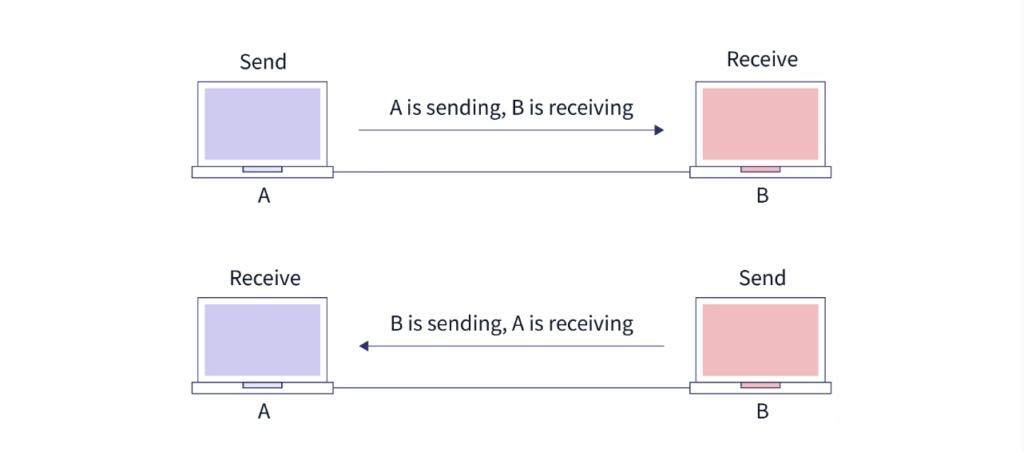Table of Contents
In this article, you’ll learn about Modes of Transmission in Network such as Simplex, Half Duplex and Full Duplex.
What are Transmission Modes in Computer Networks?
Transmission modes in computer networks define how data flows between two devices on a communication channel that includes an optical fiber, wireless channels, copper wires, and other storage media . It is also known as Data Communication Mode. The transmission mode is sometimes referred to as a directional mode because each communication channel is coupled with a direction provided by the transmission media.
There are three types of communication ,that is possible between the devices.
1. Simplex Mode

In simplex mode, the communication is unidirectional, as on a one-way street. Only one of the two devices on a link can transmit; the other can only receive.
Examples
- A basic example of simplex transmission mode is communication between a computer and a keyboard. The keyboard can only accept data from the user, and the monitor can only display data on the screen.
- The radio station is a simplex channel since it transmits the signal but never permits listeners to transmit it back.
2.Half-Duplex Mode

In half-duplex mode, each station can both transmit and receive, but not at the same time. When one device is sending, the other can only receive, and vice versa. The half-duplex mode is like a one-lane road with traffic allowed in both directions.
When cars are traveling in one direction, cars going the other way must wait. In a half-duplex transmission, the entire capacity of a channel is taken over by whichever of the two devices is transmitting at the time.
Examples
- A communication using a Walkie-talkie is an example of a half duplex mode. When using a walkie-talkie, one party speaks while the other listens. After a slight pause, the other party speaks while the first party listens. Speaking at the same time produces a distorted sound that cannot be understood.
3.Full-Duplex Mode

The full-duplex mode is used when communication in both directions is required all the time. The capacity of the channel, however, must be divided between the two directions.
One common example of full-duplex communication is the telephone network. When two people are communicating with a telephone line, both can talk and listen at the same time.
Examples
- A telephone network in which two people communicate over a phone line on which both can talk and listen at the same time.
- In the messaging app, we can send and receive messages simultaneously.
Comparison Chart between Simplex, Half Duplex and Full Duplex
| Basis for Comparison | Simplex | Half Duplex | Full Duplex |
| Direction of Communication | Unidirectional | Two-directional, one at a time | Two-directional, simultaneously |
| Send / Receive | Sender can only send data | Sender can send and receive data, but one a time | Sender can send and receive data simultaneously |
| Performance | Worst performing mode of transmission | Better than Simplex | Best performing mode of transmission |
| Example | Keyboard and monitor | Walkie-talkie | Telephone |